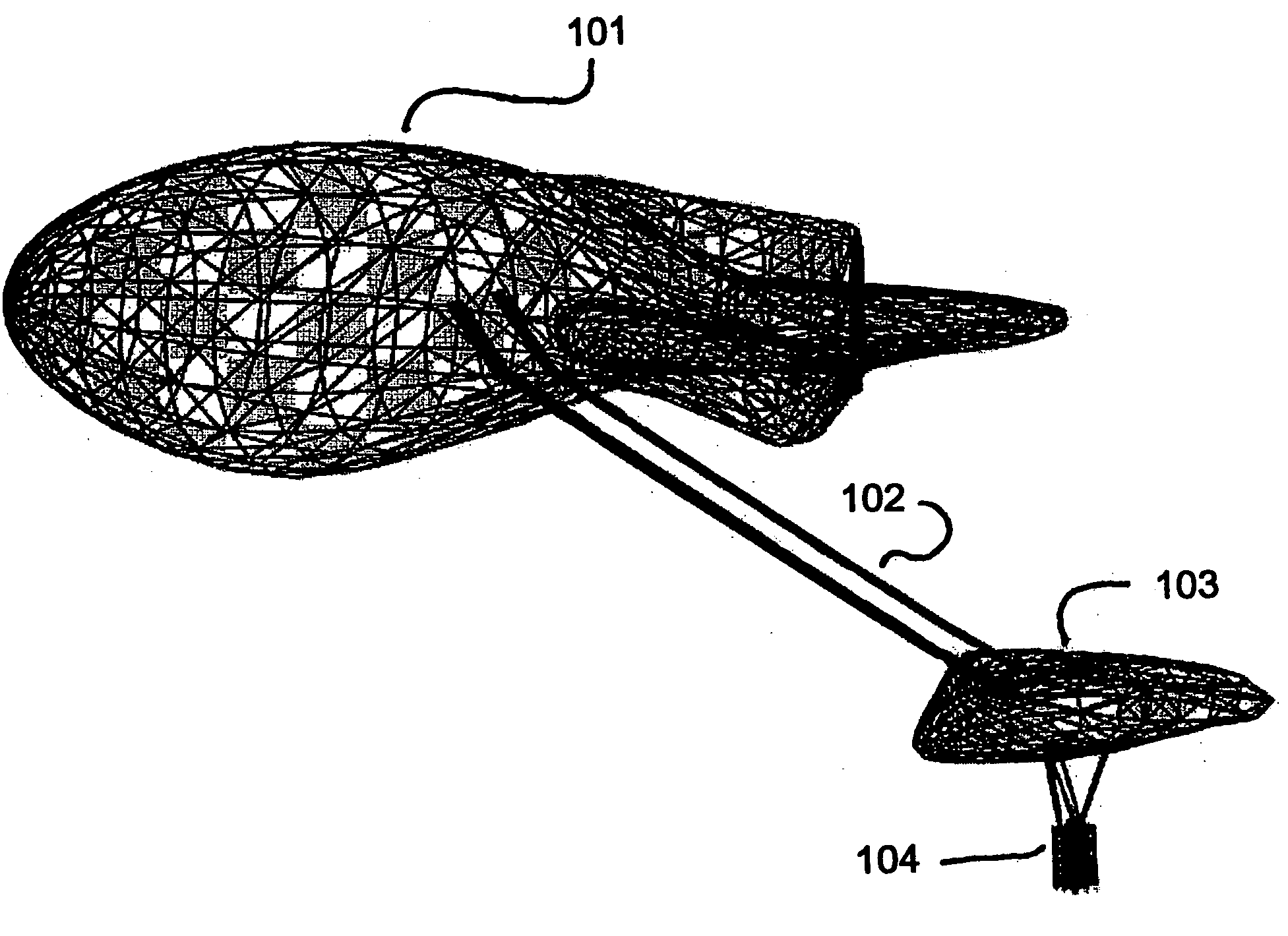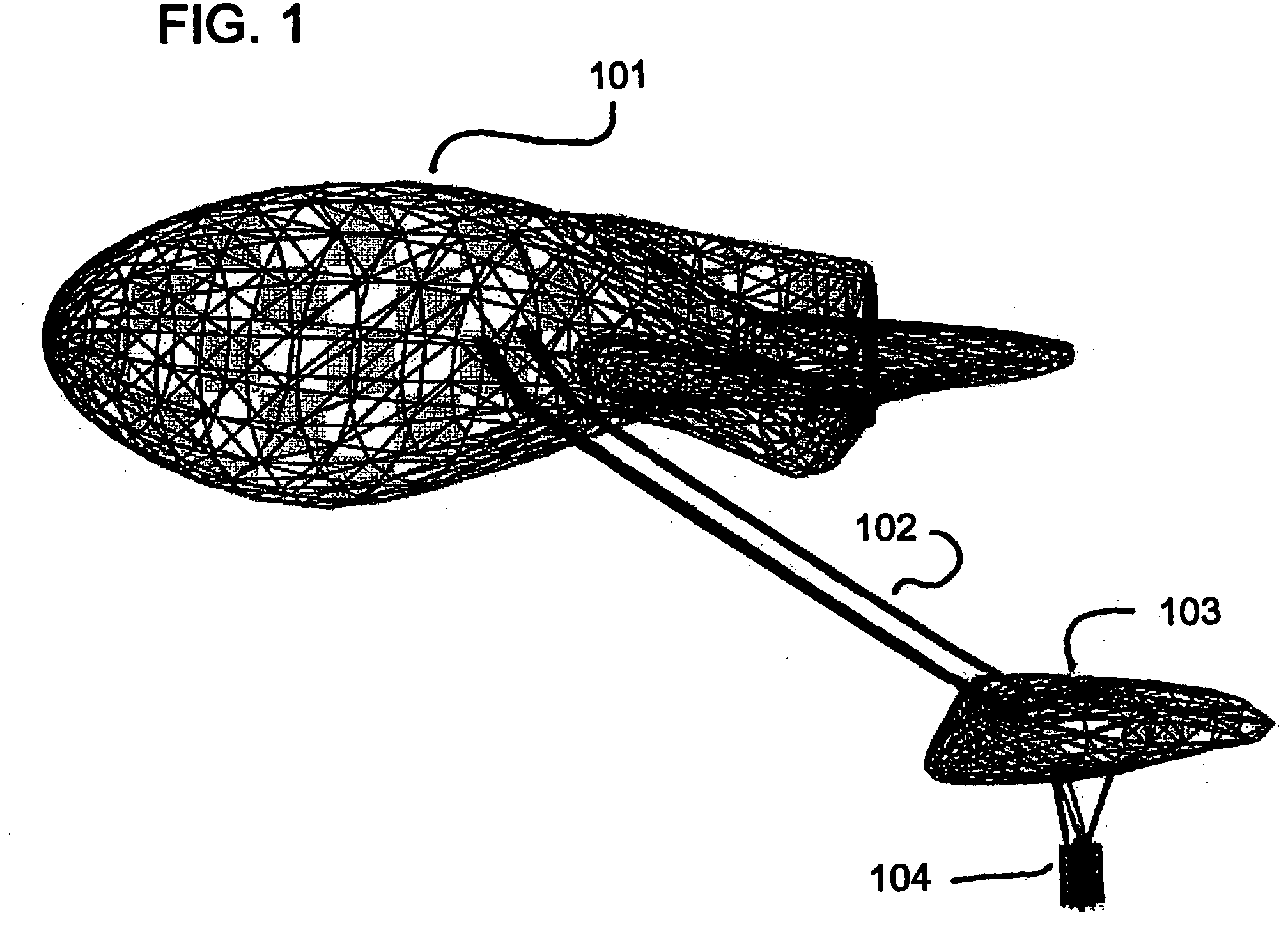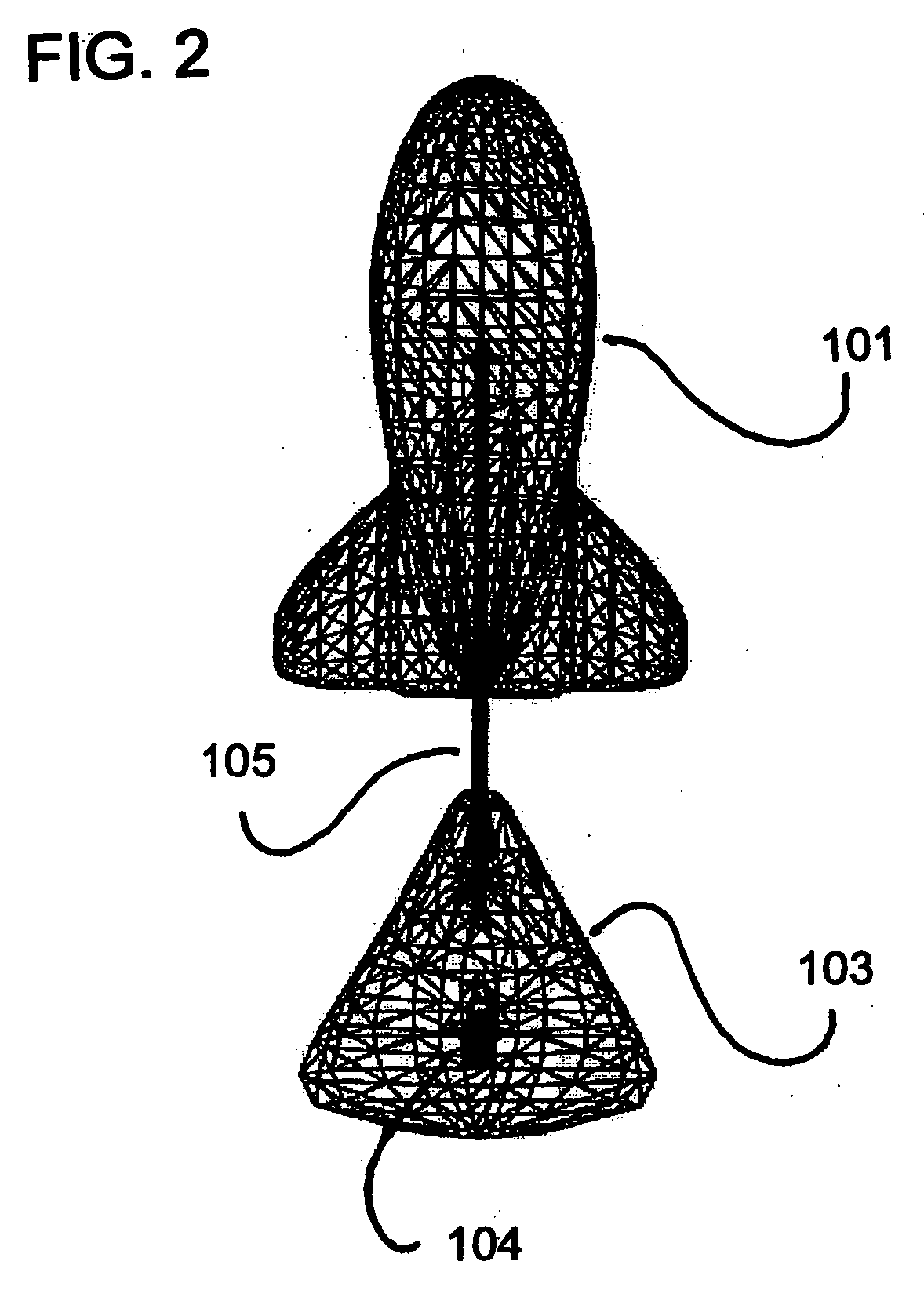Multibody aircrane
a multi-body, aircrane technology, applied in special-purpose vessels, passenger handling apparatuses, transportation and packaging, etc., to achieve the effect of efficient power and propulsion, precise and timely point to point transfer
- Summary
- Abstract
- Description
- Claims
- Application Information
AI Technical Summary
Benefits of technology
Problems solved by technology
Method used
Image
Examples
Embodiment Construction
[0059]Overall, the AIRSHIP / SKYCRANE represents a new structural design approach, and utilizes an innovative lift and control strategy (e.g. optimum heaviness ratio strategy, trim management, VTOL performance, along with vectored thrust, etc) for precise point to point very heavy lifting. As a fully integrated semi-autonomous, inflatable multibody system, this VTOL air-crane contains three distinct subcomponents, an AIRSHIP. SKYCRANE and LOADFRAME / with payload. During heavy lift operations, these three subcomponents are decoupled but physically linked via high-strength aramid tether lines.
[0060]The embodiment represents a scalable prototype. Scaling up the individual subcomponents in this multibody system would require structural adjustments including the regauging and realignment of the cabling system, to maintain stability and trim during payload transfer operations. Scaling up the system would increase the system's overall heavy lifting capacity, to as much as 500+ tons.
[0061]Espe...
PUM
 Login to View More
Login to View More Abstract
Description
Claims
Application Information
 Login to View More
Login to View More - R&D
- Intellectual Property
- Life Sciences
- Materials
- Tech Scout
- Unparalleled Data Quality
- Higher Quality Content
- 60% Fewer Hallucinations
Browse by: Latest US Patents, China's latest patents, Technical Efficacy Thesaurus, Application Domain, Technology Topic, Popular Technical Reports.
© 2025 PatSnap. All rights reserved.Legal|Privacy policy|Modern Slavery Act Transparency Statement|Sitemap|About US| Contact US: help@patsnap.com



